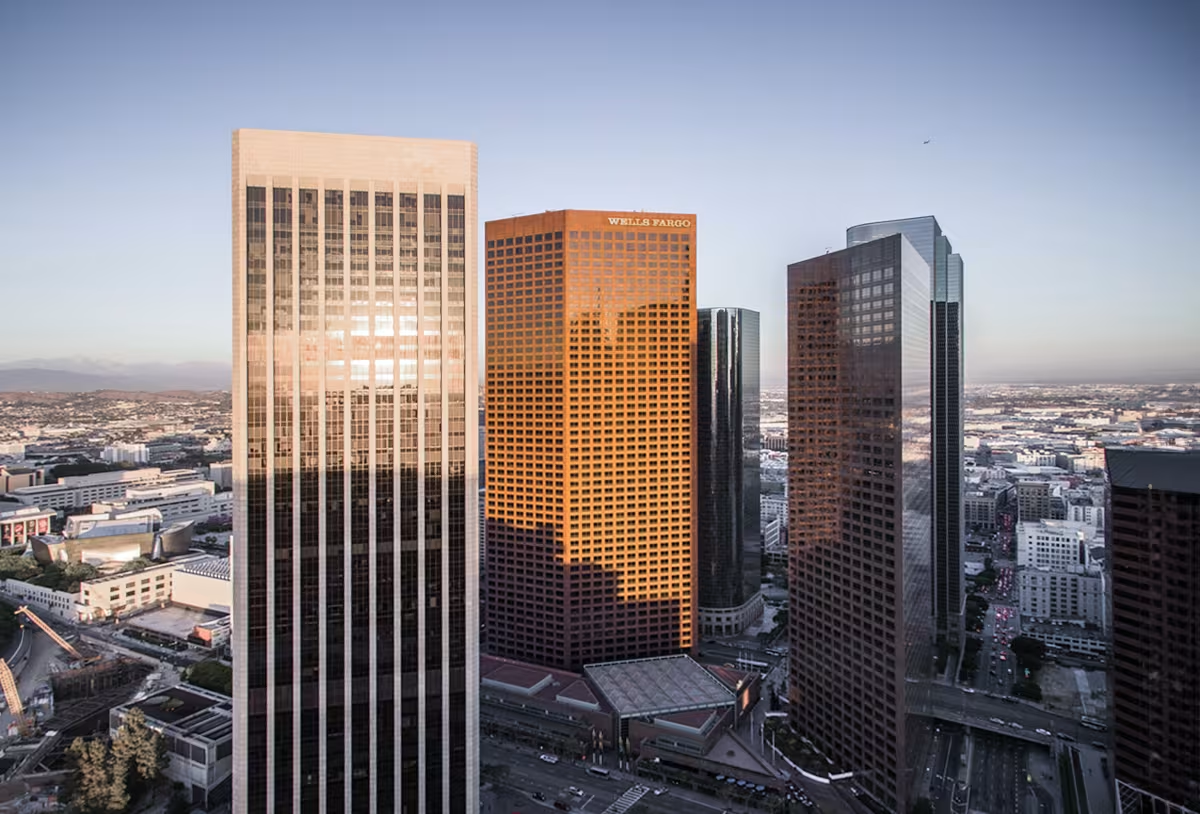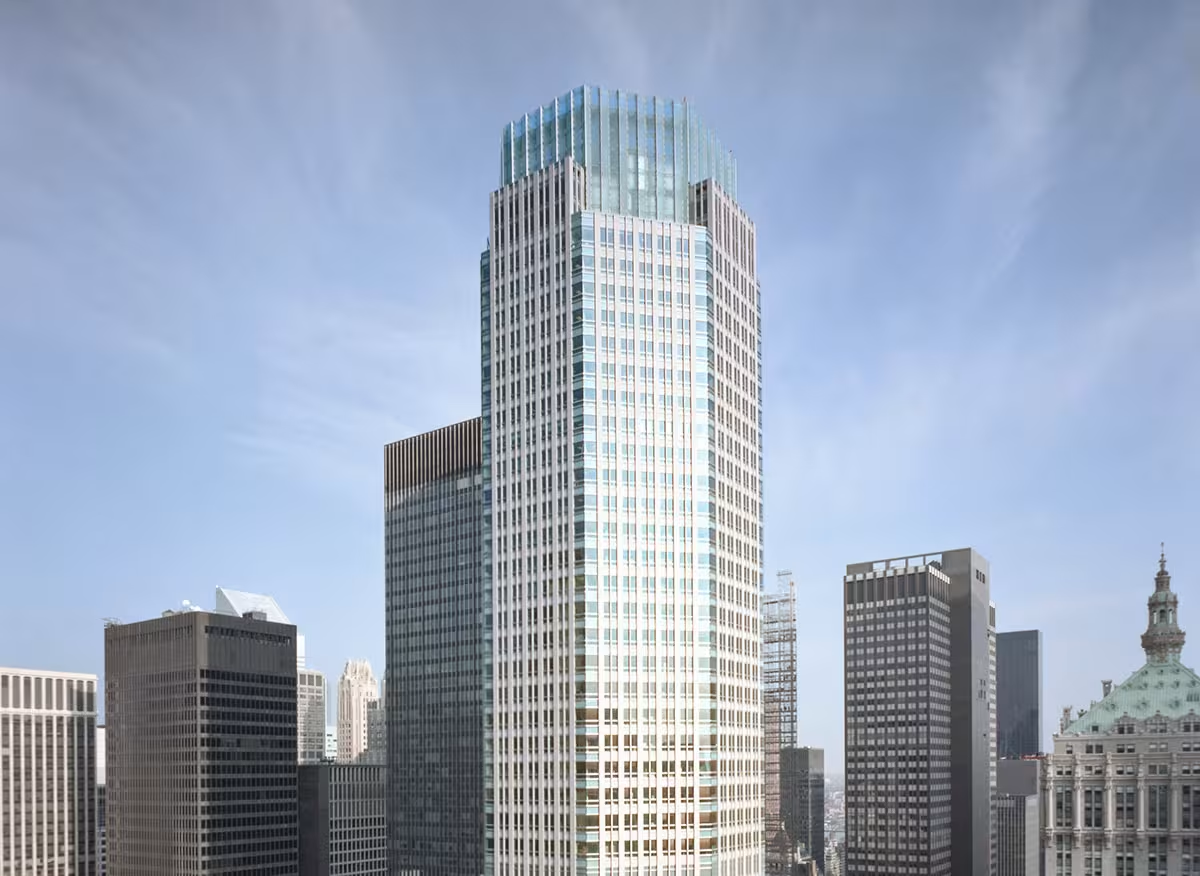Wells Fargo Tower vs 383 Madison Avenue Building


Comparing the Wells Fargo Tower and the 383 Madison Avenue Building is compelling because they were both designed by Skidmore, Owings & Merrill, yet they stand in different cities (Los Angeles, CA and New York, NY), and were completed a decade apart.
What this will allow us to see, is how the same firm's approach adapted to different places in different periods of time.
Height & Size
These two towers present an interesting contrast in their proportions. The 383 Madison Avenue Building rises higher at 755ft (230m), while the Wells Fargo Tower reaches 722ft (220m). However, the Wells Fargo Tower accommodates more floors with 54 levels above ground, compared to 47 floors in the 383 Madison Avenue Building.
This suggests different approaches to interior space design. The 383 Madison Avenue Building has an average floor-to-floor height of approximately 4.9m, while the Wells Fargo Tower has more compact floors averaging around 4.1m each. The taller building's more generous floor heights might indicate grander interior spaces, higher ceilings, or different programmatic requirements.
These different proportions likely reflect the specific needs each building was designed to serve, whether driven by zoning regulations, client requirements, or the intended use of the spaces within. The contrast shows how architects can achieve different spatial experiences even when working with similar overall building scales.
Architectural Style
The Wells Fargo Tower was designed in the Postmodernism style, while the 383 Madison Avenue Building reflects the principles of Contemporary.
At the time of their completion, both styles were well established. This makes the comparison especially interesting, because both buildings represent a dominant aesthetic at a particular point in time.Uses
Both the Wells Fargo Tower and the 383 Madison Avenue Building were designed to serve as commercial towers, and that has remained their main use since their completion, serving similar roles in the urban fabric.
Structure & Facade
Both towers share the same structural solution, a Frame system.
A frame structure uses a grid of columns and beams to carry the building's loads. This frees the walls from structural duties, allowing for flexible floor plans and larger windows.
However, when it comes to the facade, both buildings use different approaches. The Wells Fargo Tower uses a Curtain Wall facade, while the 383 Madison Avenue Building uses a Modular facade.
A Curtain Wall facade like the one seen in the Wells Fargo Tower uses a lightweight glass curtain wall hung from the structure, while a modular facade like the one seen in the 383 Madison Avenue Building employs prefabricated panels, often mixing solid surfaces with smaller windows.
| Wells Fargo Tower | 383 Madison Avenue Building | |
|---|---|---|
| Skidmore, Owings & Merrill | Architect | Skidmore, Owings & Merrill |
| 1981 | Construction Started | 1999 |
| 1983 | Year Completed | 2001 |
| Postmodernism | Architectural Style | Contemporary |
| Commercial | Current Use | Commercial |
| 54 | Floors Above Ground | 47 |
| 220 m | Height (m) | 230 m |
| 129200 | Built-up Area (m²) | 110000 |
| 29 | Number of Elevators | 30 |
| Frame | Structure Type | Frame |
| Steel | Vertical Structure Material | Steel |
| Concrete | Horizontal Structure Material | Poured Concrete Over Metal Decking |
| Yes | Facade Structural? | No |
| Reddish Brown Granite, Glass | Main Facade Material | Granite, Glass |
| Turner Construction Company | Main Contractor | Turner Construction Company |
| Thomas Properties Group | Developer | Gerald D Hines Interests |
| Skidmore, Owings & Merrill | Structural Engineer | WSP Cantor Seinuk |
| CA | State | NY |
| Los Angeles | City | New York |
| 333 S. Grand Avenue | Address | 383 Madison Avenue |